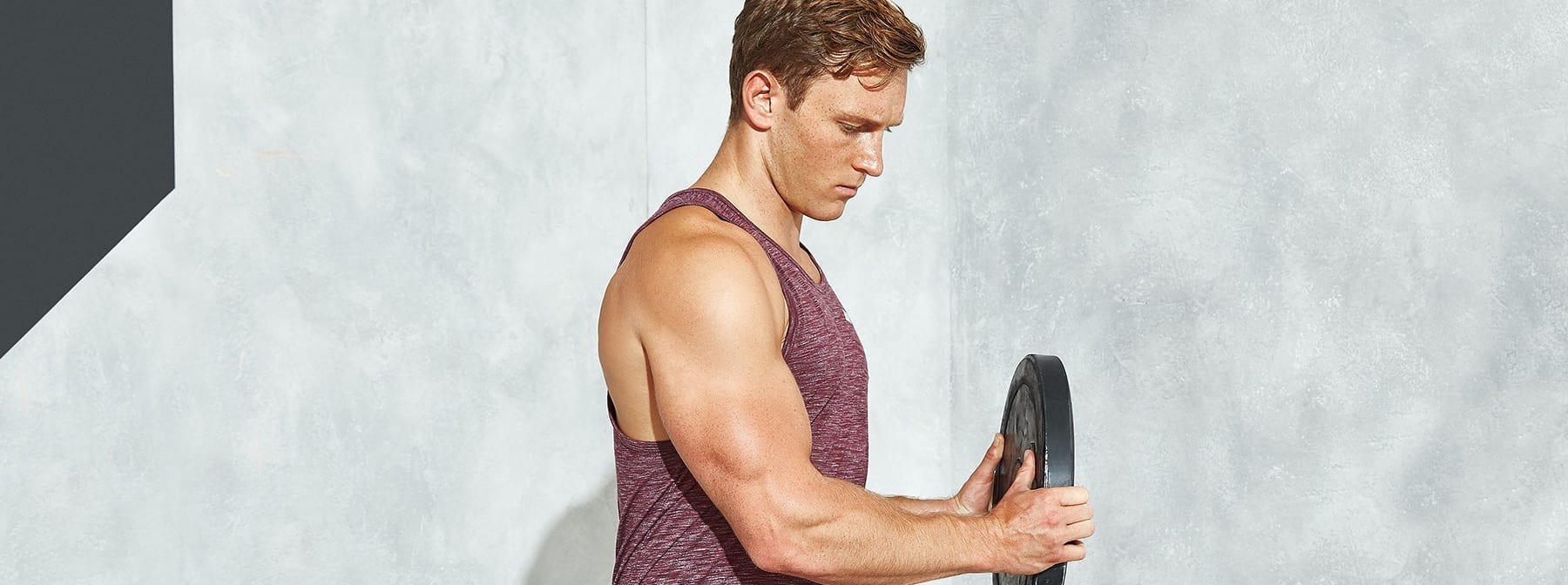
Getting muscular, make some more gains, building muscle, recruit new muscle fibers – call it whatever you want – but it only and truly happens while eating more.
How much more? More carbohydrates? More fat? More protein? How can I stay lean while building muscle? How can I put on muscle mass without getting fat?
How can I eat more and still have a six-pack?These all are questions that you may ask yourself, or should ask yourself, before going into a bulking phase. Read on and find out how you can gain more muscles without putting on too much fat.
When to Bulk
First and foremost I think it’s a good idea to start by talking a little bit about whether you should cut or bulk first. This decision will depend of factors such as your current body fat level, your goal physique and your level of experience with lifting weights, but here are a few guidelines you should follow.
Based on body fat level
Generally speaking the cutoff body fat percent for bulking is about 15-16% for males and around 22-23% for females. This means that if you are above these body fat levels you should cut (lose fat), and if you are under, you should bulk.
Making the decision to bulk or to cut depending on body fat level has to do with the amount of time you will need to get lean. The whole idea behind this is that you want to spend as little time as possible in a deficit (a catabolic state) and maximize the time you are in surplus (bulking) because that’s when you are actually building muscle and getting stronger.
If you get to really high body fat levels you will need to spend more time in a deficit which hinders muscle growth (or can even cause muscle loss) and is not optimal for your hormones. That’s why it’s recommended to stop bulking at a relatively moderate body fat level.
Based on your goal physique
For some people, 8% body fat may look gross, while for others it may be the physique of their dreams. Some may want that beach body type of look while some may want the shredded superhero physique. That’s why the 15-16% body fat for males and 22-23% for females can be slightly adjusted with +2% or so, based on how your goal physique looks like.

Based on your lifting experience
As you may or may not know, inexperienced beginners have a big advantage – they can build muscle at a very fast rate and they can do it while losing fat as well. This is an advantage you will not have forever and there’s no point in not making good use of it. That’s why it’s recommended that beginners should try to stay at least at maintenance level or even be in a mild surplus even if they start a little bit above the body fat levels I mentioned before.
However, if you are seriously overweight like I was when I first started lifting, at a heavy 35% body fat, you definitely need to start off by cutting back on calories. Yeah, the gains will not come that easy and that fast, but that’s a compromise you need to make.
The idea is to strip off the excess fat as fast as possible (within healthy limits though) and then start bulking and putting on more muscle size.
These are pretty much the guidelines I recommend for making the decision to bulk or to cut. Now let’s see how bulking (or better yet – lean bulking) should be approached correctly.
The ‘Eat Big To Get Big’ Theory
You may have heard this before. In order to get big, you need to eat big. This is true to some extent, but you don’t really need to eat that much to maximize muscle growth. You need to put a cap on it, otherwise, you will gain a lot of fat while building the same amount of muscle you would build by following a more moderate caloric surplus.
As we are going to see shortly, you only need to be in a mild surplus and eat the right stuff in order to maximize muscle gain. As opposed to what many uneducated bodybuilders think, bulking does not mean eating pizzas and cookies all day long.
Bottom line, I don’t recommend following a “dirty bulk” type of diet.
Caloric Surplus
As science tells us, muscle growth happens in a caloric surplus or in a positive energy balance. Unless you are an untrained beginner there is no chance in hell your body can build new tissue, recruit new muscle fibers if you are not eating more calories than your maintenance level.
Caloric intake is the most important factor that determines muscle growth.
In a caloric surplus, the protein synthesis is increased and our body is in an anabolic state for most of the time, as opposed to a caloric deficit, when we are in a catabolic state for the majority of the time.
On top of that a caloric surplus will provide you with more energy will make your workouts better, will increase testosterone levels, all of these resulting in superior results in terms of muscle mass.
The tricky part of bulking is to do it smartly so that the amount of fat you gain (because you will gain some fat as well) is minimized. This way if you start bulking at 9% body fat for example and you gain just 1 pound of fat per month you will be able to be bulking for much more time than you would if you would gain 3 pounds of fat per week. Bulking for a longer time means more muscle gains.
How Much Food?
This is where most people do things wrong and that’s why bulking is usually associated with getting fat and so many guys and gals are afraid to eat more – because they are afraid they will get fat. As I said, this is partially true – if your caloric surplus is too large you will put on more fat than muscle. But if you do it smart the results will be impressive.
The sweet spot for a lean bulk is to gain no more than 0.5-1 pound of body weight each week. For most people this will be split 50/50 between muscle and fat gain. So, basically you will gain 1 pound of fat for each pound of muscle – which is a good ratio.
All you have to do now is to set your caloric surplus so that you stay within the 0.5-1 pound weight gain range each week. If you are a beginner you will build muscle faster so you should be more towards the 1 pound per week rate, if you are more advanced you should probably more towards the 0.5 pound per week rate.
You will be amazed to learn that a very mild caloric surplus of just 5-10% above your maintenance calories is enough the determine muscle growth at the maximum possible rate. This is ‘peanuts’ basically. Think about it a little bit. If you’re maintaining at 2,500 kcal you only need to eat 125 – 250 kcal extra each day.
Now you can see why many people get too fat when bulking. They eat too many calories. You won’t build more muscle if you are eating 500 kcal over your maintenance, you will only get fatter.
Bulking with just 5-10% extra calories is often referred to as lean bulking – maximizing muscle growth while minimizing fat gain.
What about macros?
To keep things short and to the point, all the extra calories of a surplus should come from carbohydrates alone; maybe some fats if you want to make your meals tastier. There is no need to increase protein intake as long as you are getting your 1 - 1.5 grams of protein per pound of bodyweight.
Carbs, on the other hand, will boost your energy levels, will fill your muscle with glycogen and your workouts will get better.

How To Lean Bulk
As you noticed a 200 kcal surplus is enough. This is not a lot by any means. A protein smoothie has more calories than that, so it’s very easy to overdo it, or if you constantly eat just 200 kcal above maintenance everyday it may not even seem like a bulk.
That’s why I find it clever to rollover the surplus calories each 3-4 days or so. Going back to our example above, if you stay at maintenance level Monday to Thursday you can rollover your 200 kcal per day surplus to Friday, which means that on Friday you will have 1,000 kcal extra to eat. This could be a nice dinner with the family, a birthday party or any other social event.
Calorie rollover is a cool and easy way of building your diet around your personal lifestyle and enjoy life and foods by still eating right. That’s a way of doing it, I’m sure there are others, the important thing is to make sure your weekly average is on spot and you will be fine. Constantly measure your weight and stay within the 0.5 – 1 pounds weight gain per week interval. If you are below, up your calories, if you are above, lower them.
Another cool and easy way of making sure you are not gaining too much fat during a bulk is to measure your waist size, because that’s where we hold most of the fat. If the waist size is going up to fast you’re eating too much.
That’s my take on lean bulking, if you have anything to add please use the comment section below.
Our articles should be used for informational and educational purposes only and are not intended to be taken as medical advice. If you're concerned, consult a health professional before taking dietary supplements or introducing any major changes to your diet.









